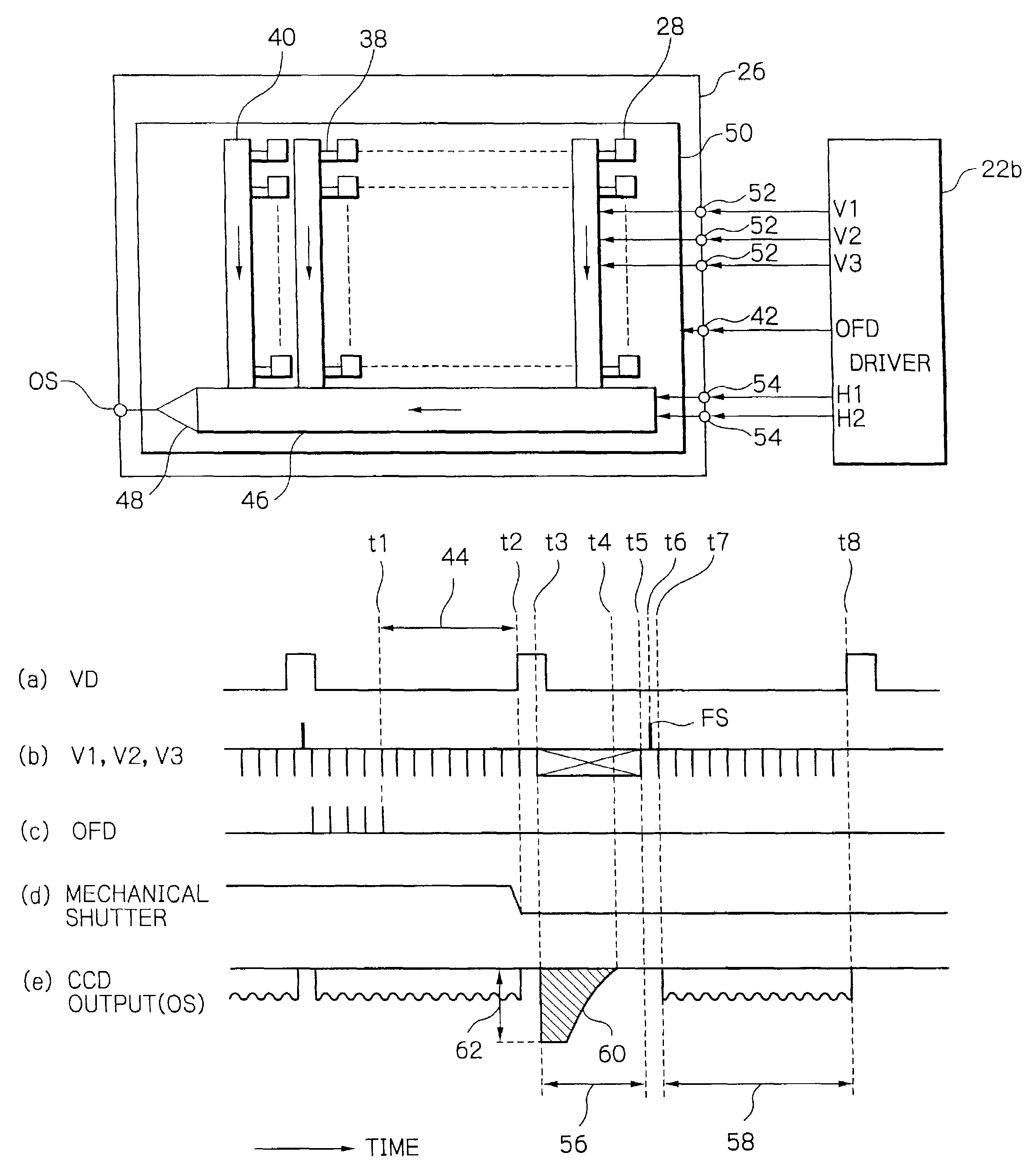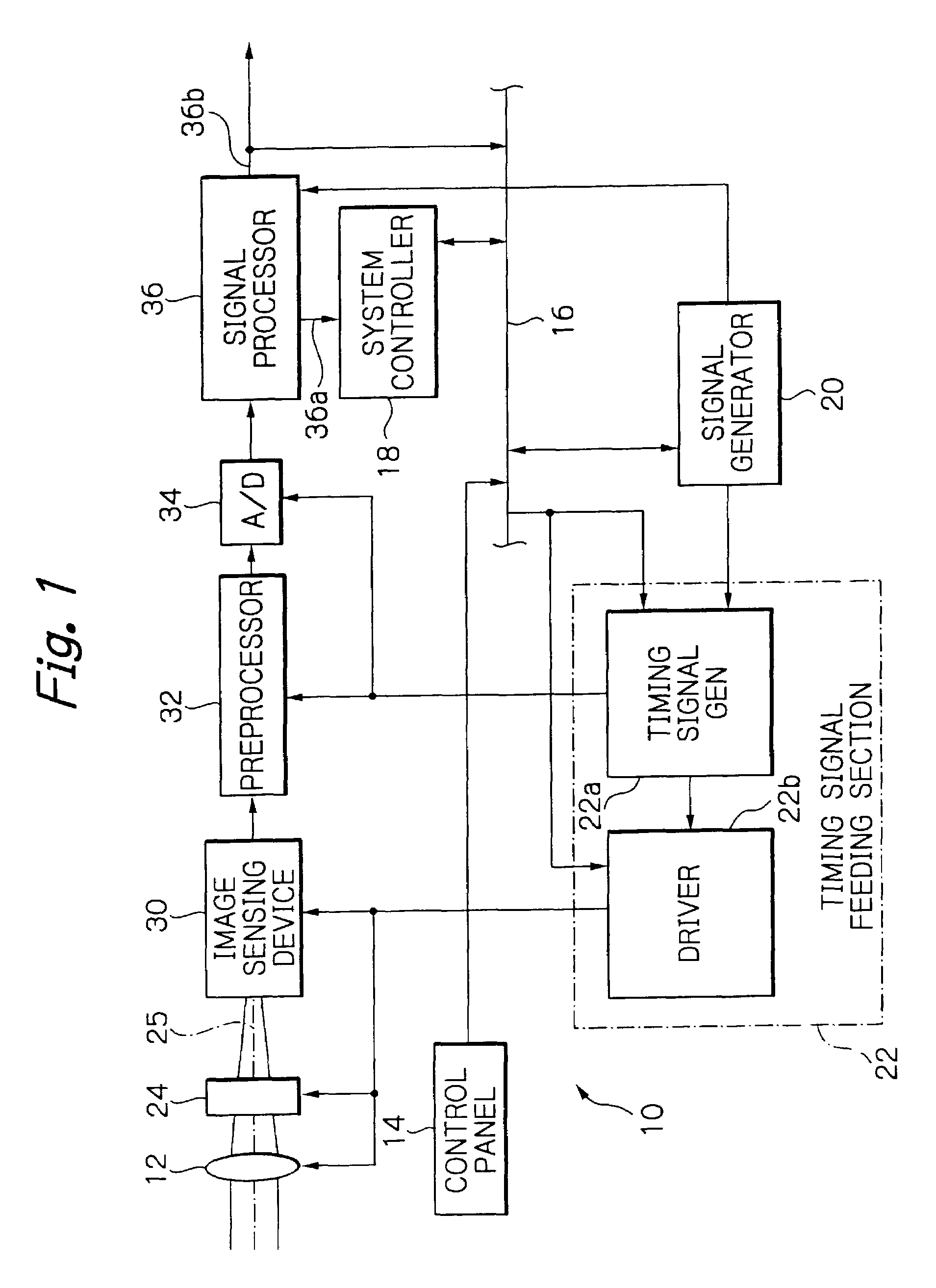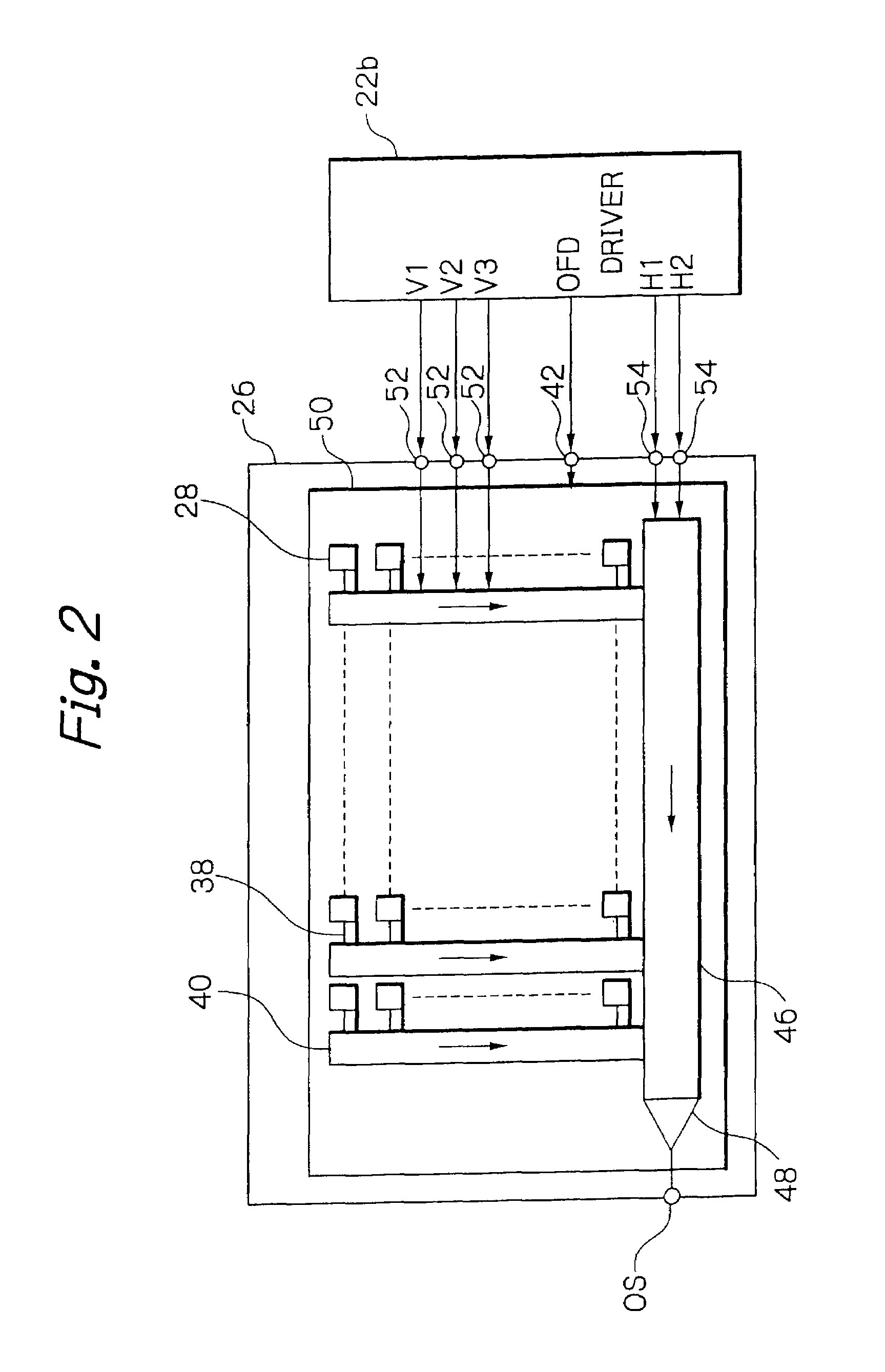Solid-state imaging apparatus for controlling a sweep transfer period in dependence upon the amount of unnecessary charges to be swept out
a technology of solid-state imaging and sweep transfer period, which is applied in the direction of television system, radiation control device, color signal processing circuit, etc., can solve the problems of generating an excessive signal charge, smear and bloom, and whitening portions around the cell
- Summary
- Abstract
- Description
- Claims
- Application Information
AI Technical Summary
Benefits of technology
Problems solved by technology
Method used
Image
Examples
Embodiment Construction
[0024]Referring to FIG. 1 of the drawings, a solid-state image pickup apparatus including a solid-state image sensing device embodying the present invention is implemented as a digital still camera by way of example. Briefly, the digital still camera, generally 10, continuously monitors the quantity of unnecessary charges being swept out from the solid-state image sensing device over a sweep transfer period and ends sweeping when the quantity of unnecessary charges decreases below a preselected value or threshold. While the following description will concentrate on a still picture mode available with a digital still camera, the present invention is similarly applicable to a movie mode also available with such a camera and even to a video camera.
[0025]As shown in FIG. 1, the digital still camera 10 generally includes an optical lens system 12, a control panel 14, a system controller 18, a signal generator 20, a timing signal feeding section 22, an iris control mechanism 24, an image ...
PUM
 Login to View More
Login to View More Abstract
Description
Claims
Application Information
 Login to View More
Login to View More - R&D
- Intellectual Property
- Life Sciences
- Materials
- Tech Scout
- Unparalleled Data Quality
- Higher Quality Content
- 60% Fewer Hallucinations
Browse by: Latest US Patents, China's latest patents, Technical Efficacy Thesaurus, Application Domain, Technology Topic, Popular Technical Reports.
© 2025 PatSnap. All rights reserved.Legal|Privacy policy|Modern Slavery Act Transparency Statement|Sitemap|About US| Contact US: help@patsnap.com



